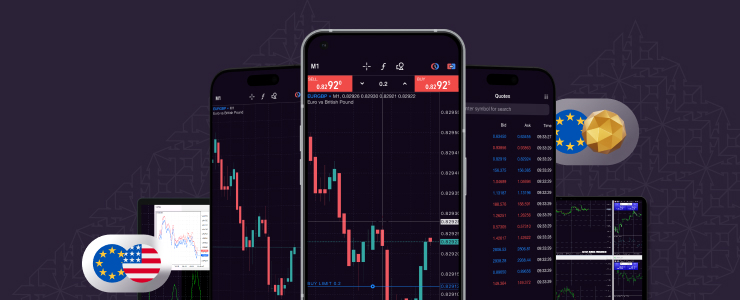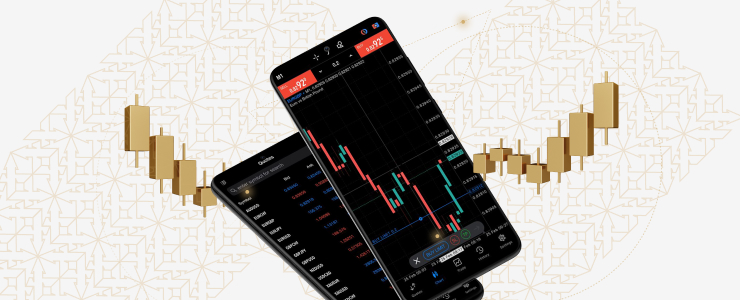A alavancagem é um tema muito discutido no mercado cambial, especialmente entre os novos operadores. É frequentemente mencionada em artigos educativos como algo que os novatos devem evitar para se protegerem de prejuízos financeiros excessivos.
A alavancagem, também conhecida como negociação com margem, é a capacidade de ampliar as suas negociações. Por exemplo, uma negociação de US$ 10 com alavancagem de 1:10 é multiplicada por dez e acaba se tornando uma negociação de US$ 100. Isso também significa que todos os ganhos e perdas são multiplicados por dez, de modo que uma variação de US$ 1 para qualquer um dos lados cresce para US$ 10.
É fácil perceber o apelo disso. Muitos traders se precipitam em usar alavancagem, pensando que podem facilmente multiplicar os seus ganhos. No entanto, na maioria dos casos, esses negociadores esgotam rapidamente as suas contas, sofrendo, por vezes, prejuízos financeiros significativos.
Isso significa que os traders nunca devem usar alavancagem nas suas negociações? Não exatamente. A alavancagem é uma ferramenta como qualquer outra, e aqueles que não são gananciosos e a utilizam de forma rigorosa, cuidadosa e com um plano podem otimizar o seu desempenho. Muitos traders profissionais e institucionais, na verdade, usam a alavancagem para distribuir melhor o seu capital.
Assim sendo, fica claro que a alavancagem tem o seu lugar na rotina de um trader médio. A questão a colocar é como e quando utilizá-la e como evitar expor-se a riscos excessivos ao utilizá-la.
Usando a alavancagem como um novo trader
Onde a maioria dos novos negociadores se queima é ao usar toda a alavancagem que uma corretora oferece. Algumas corretoras oferecem a possibilidade de multiplicar as suas negociações centenas ou até milhares de vezes, o que pode levar a padrões de negociação irresponsáveis.
Vamos pensar nisso e assumir uma pequena posição de US$ 10, conforme mencionado anteriormente. Agora, vamos aplicar uma alavancagem de 1:500 a essa posição. A negociação agora vale US$ 5.000. Esse número pode fazer com que o negociador que abriu a posição se sinta bem, já que os negociadores geralmente consideram negociações maiores mais gratificantes.
Mas o próximo ponto a considerar é que uma perda de US$ 1 se transforma numa perda de US$ 500. Em outras palavras, se um trader tiver US$ 1.000 na sua conta, por exemplo, essa negociação eliminaria metade desse valor.
É isso que muitos os negociadores não reconhecem, e é aí que muitos ficam frustrados com uma grande perda, retiram os fundos que conseguiram poupar e abandonam completamente a negociação.
É necessário ter cuidado ao utilizar alavancagem. Não apenas com a alavancagem em si, mas também nas negociações. A potência das negociações com margem depende em grande parte da competência geral do negociador. Como a alavancagem apenas multiplica o que já está a acontecer, ela não irá melhorar magicamente as suas negociações, apenas irá acelerar o que já está a acontecer.
Assim, se um negociador forex perder mais vezes do que ganhar, a alavancagem apenas esgotará a sua conta mais rapidamente. No entanto, mesmo para um negociador que consiga superar os mercados e atingir o ponto de equilíbrio ou talvez obter alguns lucros, a alavancagem forex é perigosa. Tem um impacto emocional significativo e pode tornar os negociadores receosos, afastando-os das negociações devido ao aumento do risco. Então, qual é a solução?

Noções básicas sobre o uso da alavancagem
Como mencionado, os novos negociadores provavelmente devem evitar usar alavancagem até que tenham, pelo menos, compreendido os conceitos básicos. Isso inclui conhecer a terminologia, aprender os conceitos básicos de utilização de uma plataforma, familiarizar-se com a análise e as condições subjacentes do mercado e ter, pelo menos, uma estratégia de negociação rudimentar estratégia de negociação rudimentar.
Em outras palavras, os traders devem ser capazes de se sustentar por conta própria e, de preferência, ter um histórico sólido nos mercados. Nesse caso, empregar alavancagem não os fará simplesmente cair mais rápido.
Em seguida, os negociadores devem ter muito cuidado com o nível de alavancagem que utilizam. Não há nada de errado em começar com números pequenos, como 1:2, 1:5 ou 1:10. Isso serve para testar o terreno e ver se a negociação com margem é algo que lhe agrada.
Se isso lhe parece errado, causa-lhe demasiado stress ou provoca emoções negativas importantes, como medo e ganância, a alavancagem pode simplesmente não ser para si. Não há problema nenhum nisso, a alavancagem não é para todos e não é necessária para se tornar um trader competente.
No entanto, se um trader perceber que gosta das porções relativamente maiores, poderá decidir empregar alavancagem nas suas negociações diárias. O próximo passo é fazê-lo com segurança.
Gestão de risco e alavancagem
O mais perigoso em relação à alavancagem é que ela pode esgotar os fundos rapidamente. A melhor maneira de mitigar isso é através de práticas inteligentes de gestão de risco. Mitigar o risco é o que importa, já que o objetivo principal é evitar perdas. Este artigo apresentará algumas das táticas básicas que os negociadores forex podem empregar.
Avaliação do tamanho da posição
A principal coisa a fazer ao usar alavancagem é avaliar corretamente o tamanho da posição. Ela deve se encaixar no perfil de risco geral do trader e não arriscar muito do capital total que ele tem na sua conta.
Aqui, também é importante calcular os possíveis lucros e perdas e estar ciente do quanto se está disposto a suportar. Existem muitas calculadoras de tamanho de posição disponíveis online, e elas podem ser uma ferramenta extremamente útil para isso.
Os traders podem pensar que uma calculadora de tamanho de posição é excessiva, já que é fácil para eles simplesmente multiplicar a sua negociação inicial pela alavancagem que estão a usar. E embora isso seja verdade, os traders que realizam várias negociações podem economizar tempo e energia mental valiosos, além de evitar erros, simplesmente inserindo os números em um serviço gratuito que apresentará resultados precisos.

Realizar lucros e parar perdas
Depois de avaliar com precisão o tamanho da posição, os negociadores devem lembrar-se de empregar take profits e stop losses para controlar melhor as suas posições alavancadas. Conforme observado, as perdas acumulam-se rapidamente, especialmente com números de alavancagem mais elevados. Assim, um lapso momentâneo de atenção ou julgamento pode causar danos significativos a uma conta.
Os lucros realizados e os stop losses (sendo estes últimos mais importantes neste cenário) ajudam os traders a definir pontos exatos onde as suas negociações serão encerradas. Isto significa que eles podem controlar com precisão o que estão dispostos a perder, bem como afastar-se da sua plataforma por um momento, caso algo mais precise da sua atenção imediata.
Este não é apenas um conselho para usar alavancagem. Take profits e stop losses são ótimas ferramentas para ajudar a evitar que a ganância e o medo controlem as negociações. No entanto, eles são particularmente importantes para negociações alavancadas, uma vez que estas tendem a ser posições maiores.
Proteção contra saldo negativo
Uma corretora Forex com proteção contra saldo negativo é crucial para quem utiliza alavancagem. Já foi dito várias vezes neste artigo que a alavancagem pode esvaziar contas rapidamente. A situação é ainda mais grave se a conta puder ficar negativa e, nesse caso, uma decisão errada pode prejudicar significativamente as finanças do trader.
A proteção contra saldo negativo evita isso e, essencialmente, impede que os negociadores percam mais do que possuem. É uma prática bastante rudimentar que pode evitar catástrofes. Felizmente, a maioria das corretoras oferece proteção contra saldo negativo, mas é algo que os negociadores que pretendem usar alavancagem devem verificar.

Conclusão
Usar a alavancagem forex resume-se a uma rotina de negociação sólida e a proteger-se de circunstâncias adversas. Os negociadores que completam estas duas etapas podem considerar a alavancagem uma ferramenta bastante útil que os ajuda a gerir melhor o seu capital e realmente apostar nas negociações em que acreditam. Lembre-se apenas de ser meticuloso ao calcular a sua posição e não usar alavancagem excessiva.
Isenção de responsabilidade: Estas informações não devem ser consideradas como conselhos ou recomendações de investimento, mas sim como uma comunicação de marketing.




